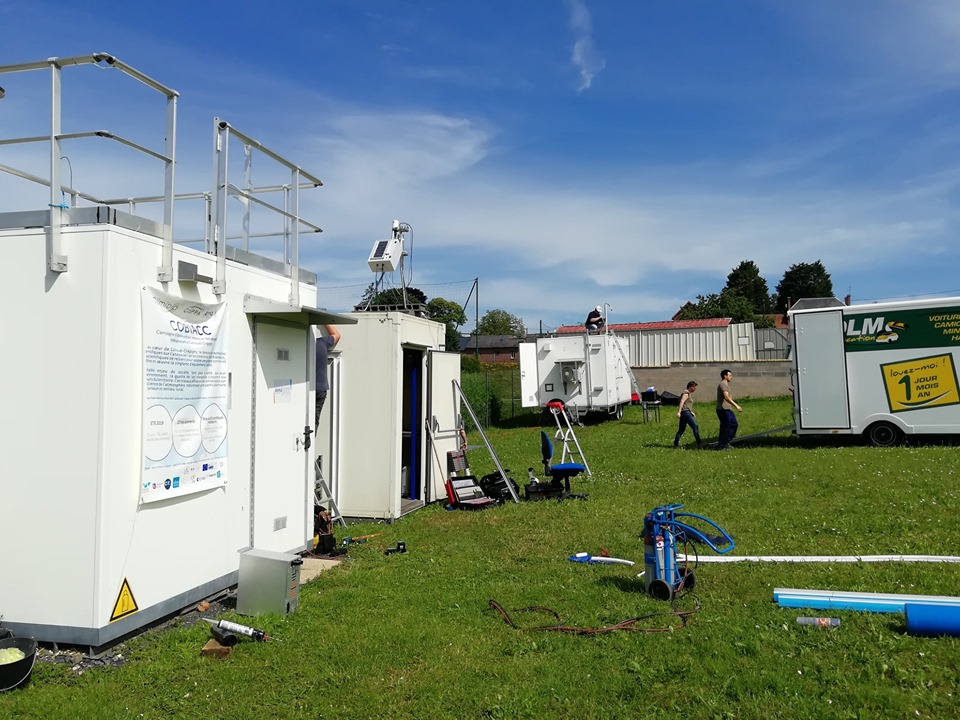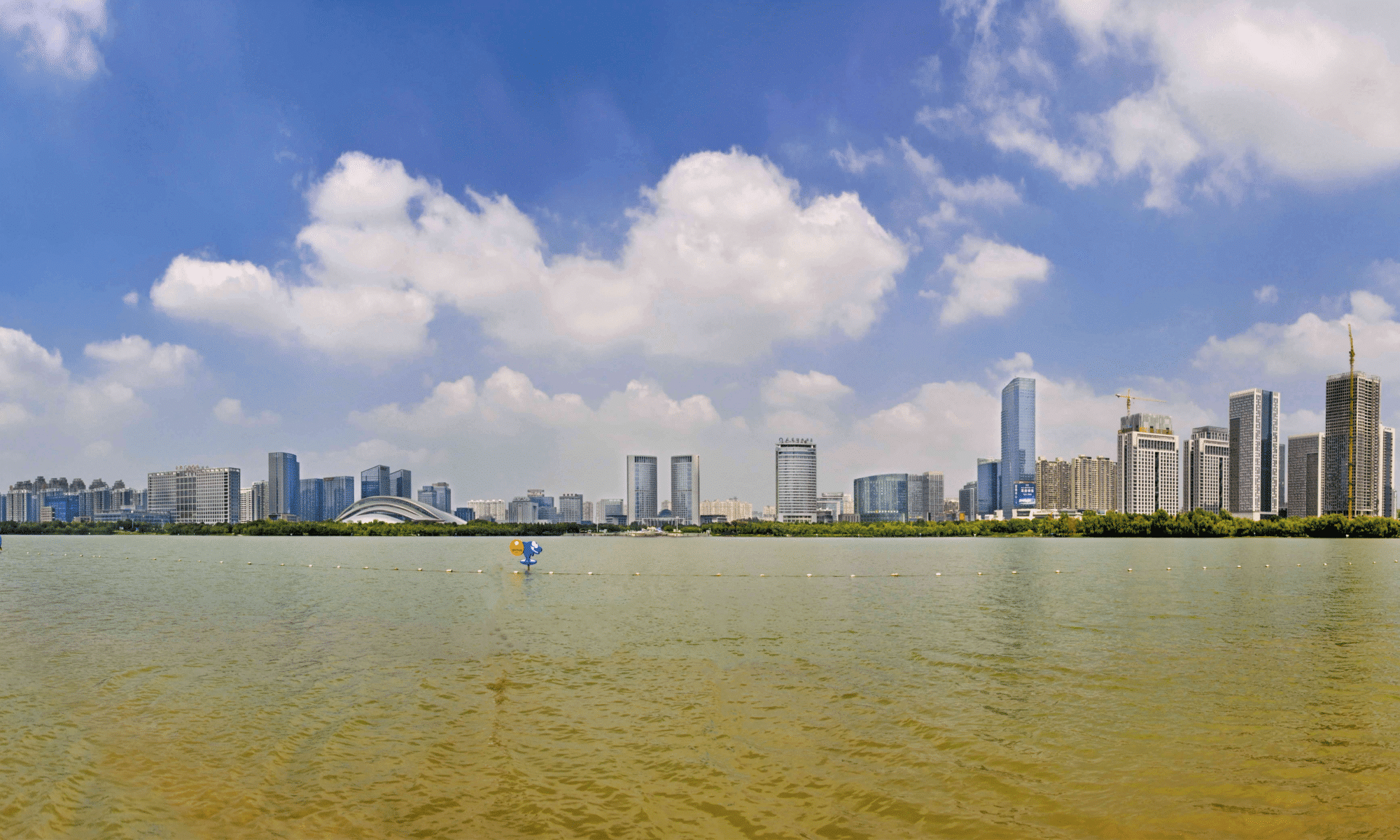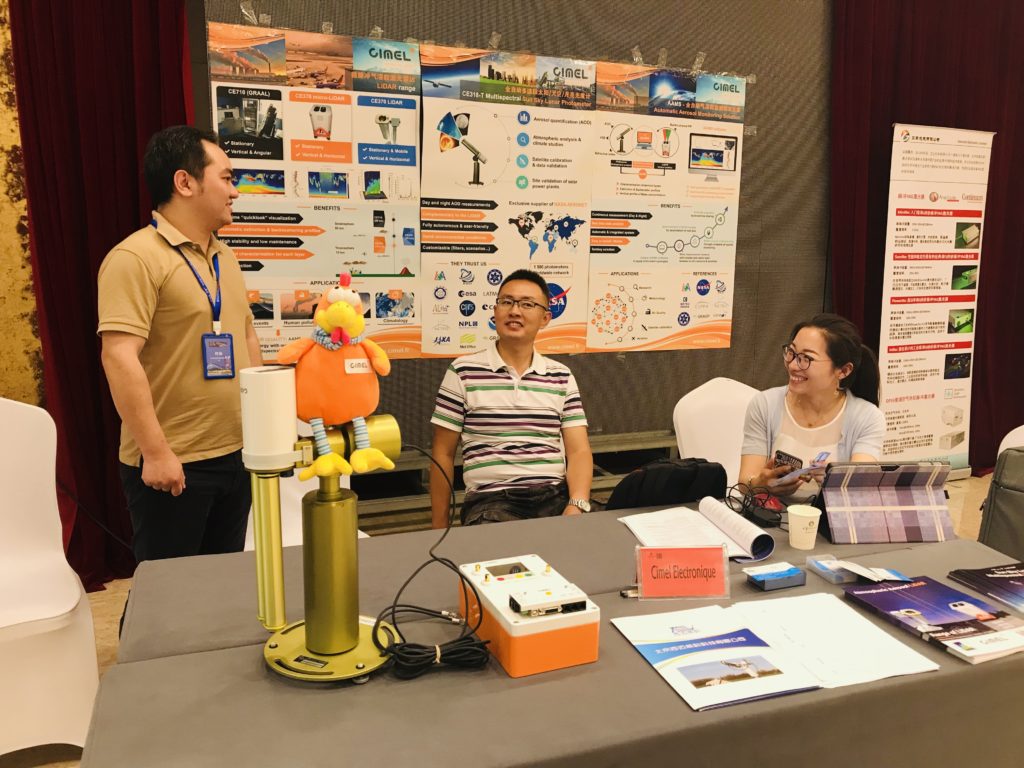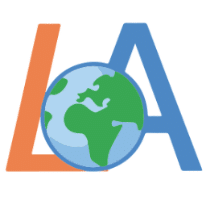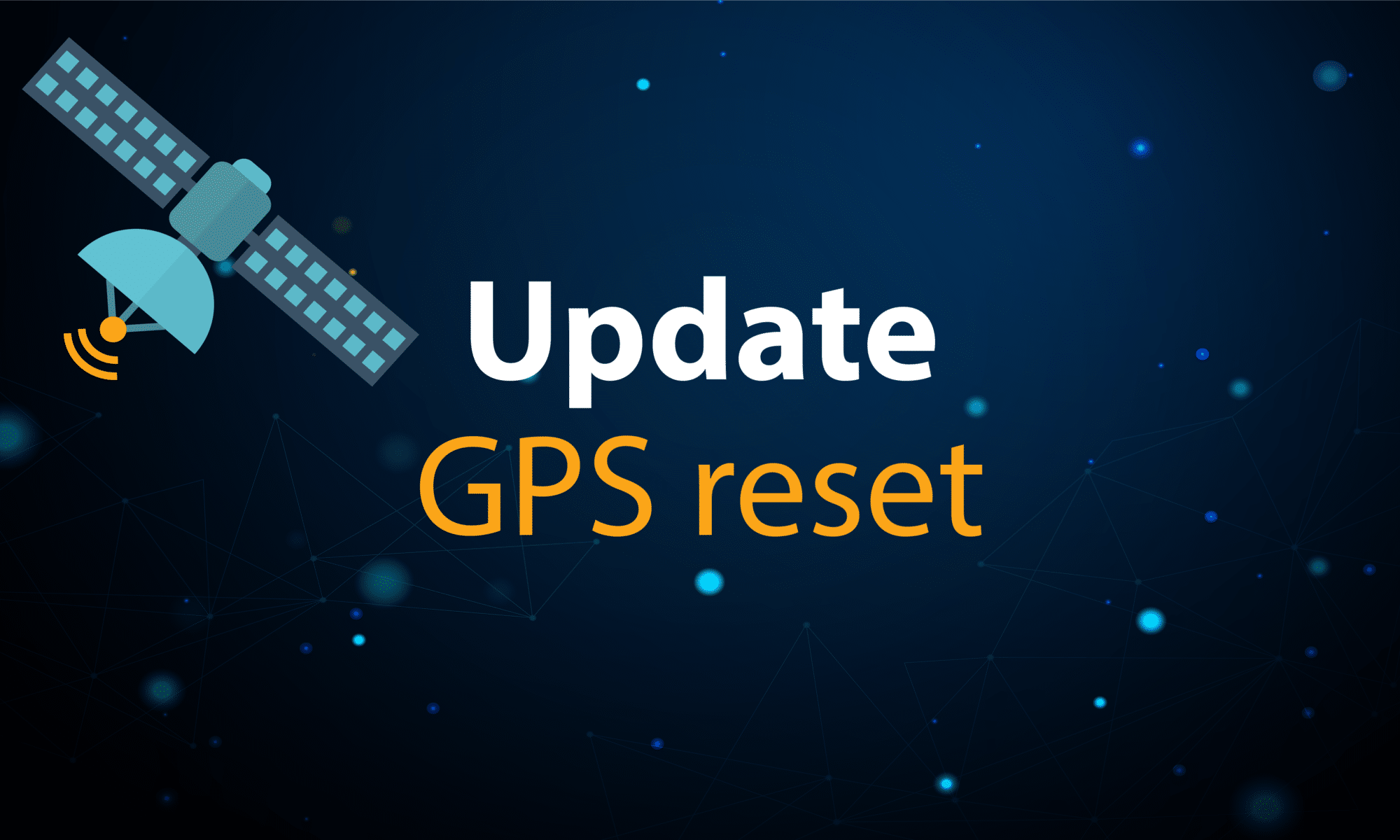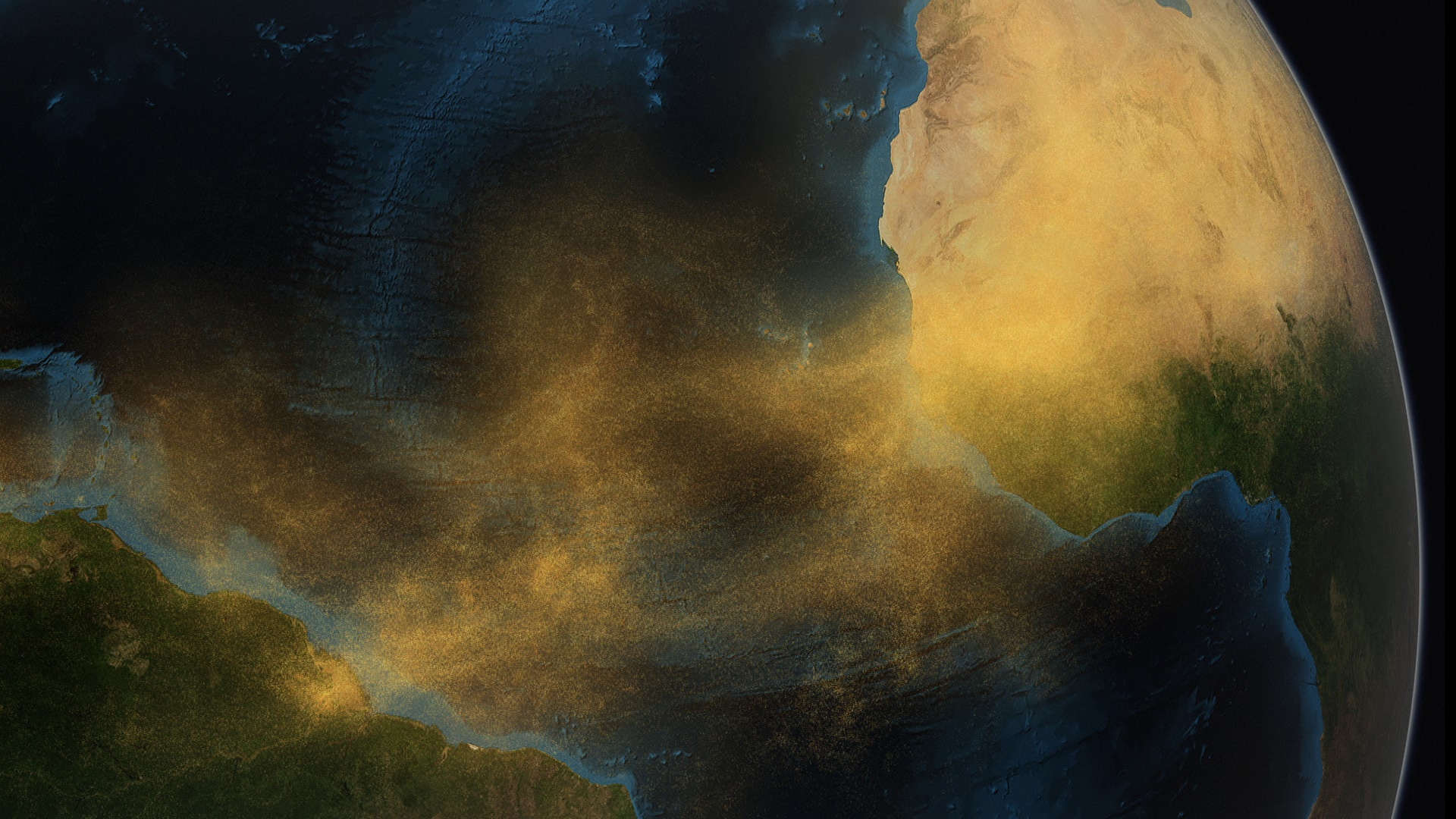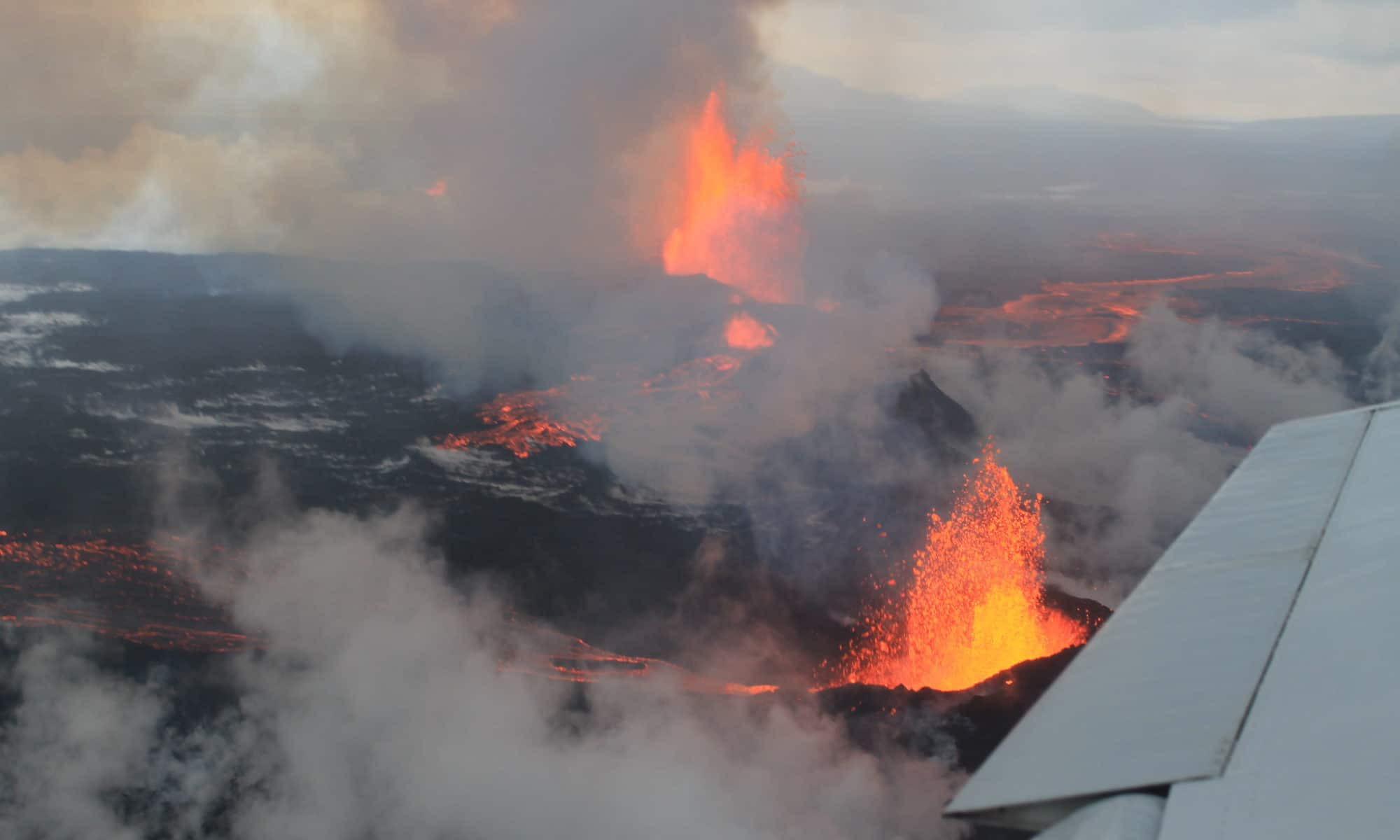IAOOS – Ice Atmosphere Arctic Ocean Observing System
FEBRUARY 2011 – DECEMBER 2019
The IAOOS Project’s objective is to develop and maintain an automated observation network of ice-tethered platforms across the Arctic Ocean which will simultaneously and independently transmit via satellite, in near real time, the state of the ocean, sea ice and the lower atmosphere.
The project uses a CIMEL microlidar to monitor the atmosphere (T, conso, f optical window).
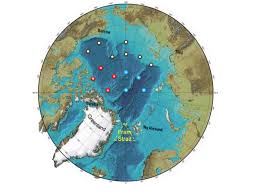
The IAOOS equipment is based on 15 autonomous platforms working at any time in the Arctic Ocean, for a period of 7 years. Every platform, made up of 3 elements ocean / atmosphere / sea ice, drifts with the sea ice, the surface winds and the oceanic currents. They are designed to stay at the sea-ice surface and float on the surface of the ocean, with an autonomy of 2 years.
The IAOOS project plans the deployment of 6 platforms per year, following the plan of deployment of the first 15 platforms. Two periods of deployments are planned every year: in spring and in autumn.
Project
Observing, understanding and quantifying climate changes in the Arctic. IAOOS is specifically concerned with the potential for a significantly reduced sea ice cover, and the impacts this might have on the environment and on human activities, both regionally and globally.
Objectives
- Deploy and maintain an integrated observing system providing simultaneous observations of the ocean, ice and lower atmosphere in real time in the Arctic
- Complementary to satellite observations
- Better understanding of interactions
- Feed operational models
- Improve predicting capabilities
Equipment on the IAOOS Platforms
- CTD vertical profilers from 0 to 1000 m depth (conductivity, temperature, depth)
- Ice Mass Balance (IMB)
- Temperature and pressure sensors
- CIMEL microlidars: T, conso, f optical window for atmosphere monitoring
- Optical depth sensors (ODS)
Partners
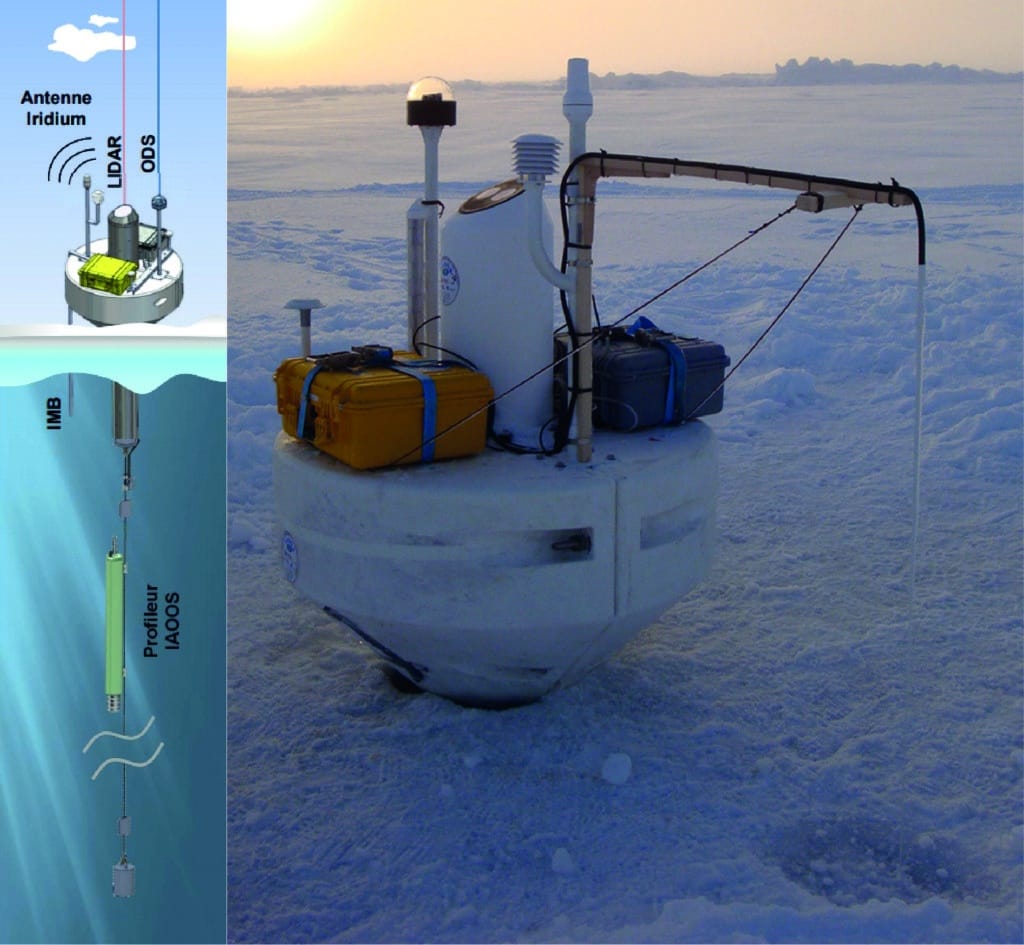
References
- Vincent Mariage, Jacques Pelon, Frédéric Blouzon, Stéphane Victori. IAOOS microlidar development and firsts results obtained during 2014 and 2015 arctic drifts . EPJ Web of Conferences, EDP Sciences, 2016, The 27th International Laser Radar Conference (IRLC 27), 119, 02005 (4 p.)(https://hal-insu.archives-ouvertes.fr/insu-01175931)
- Vincent Mariage, Jacques Pelon, Frédéric Blouzon, Stéphane Victori, Nicolas Geyskens, Nadir Amarouche, Christine Drezen, Antoine Guillot, Michel Calzas, Magali Garracio, Nicolas Wegmuller, Nathalie Sennéchael, and Christine Provost, “IAOOS microlidar-on-buoy development and first atmospheric observations obtained during 2014 and 2015 arctic drifts,” Opt. Express 25, A73-A84 (2017) (https://doi.org/10.1364/OE.25.000A73)
- Vincent Mariage. Développement et mise en oeuvre de LiDAR embarqués sur bouées dérivantes pour l’étude des propriétés des aérosols et des nuages en Arctique et des forçages radiatifs induits. Physique Atmosphérique et Océanique [physics.ao-ph]. Université Pierre et Marie Curie – Paris VI, 2015. Français. ⟨NNT : 2015PA066580⟩

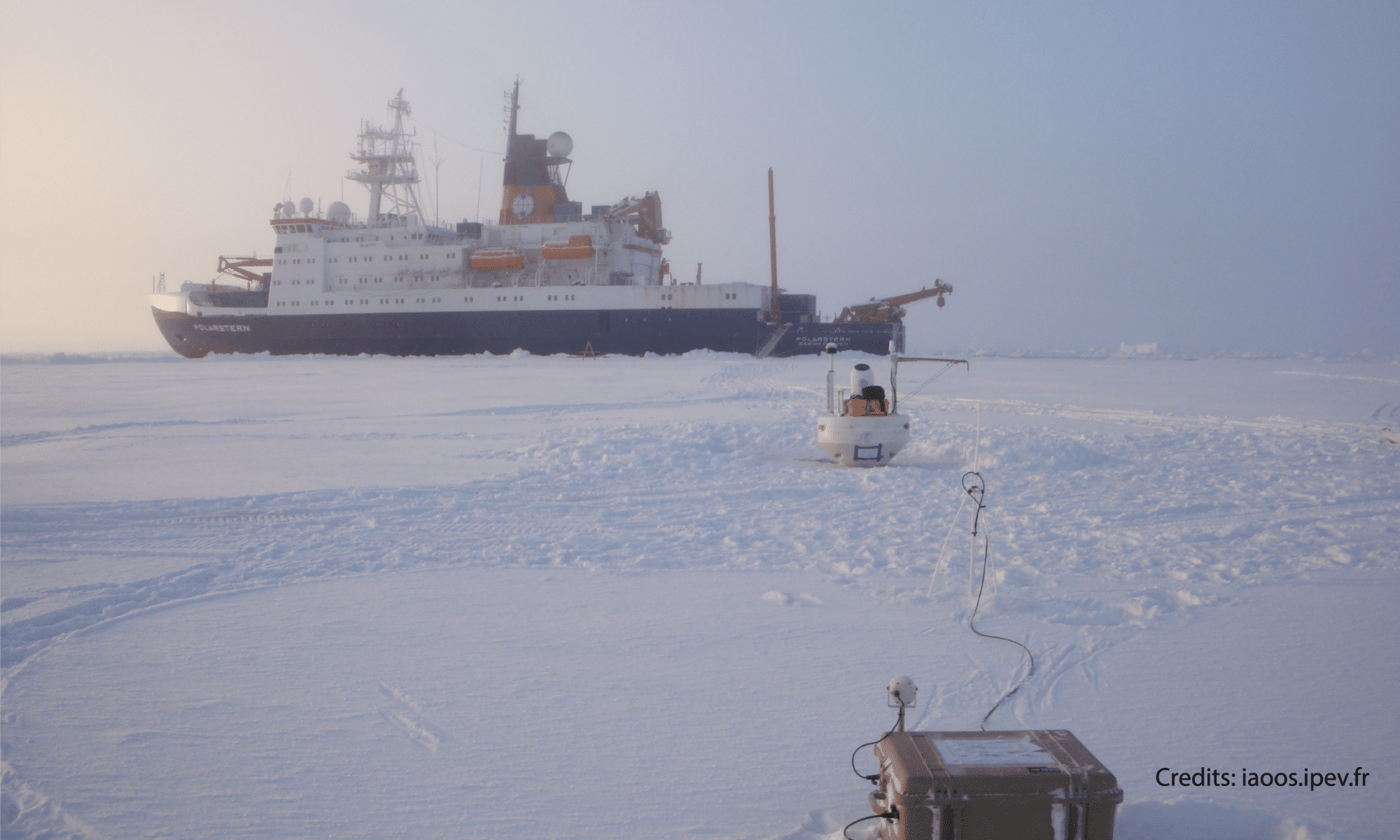
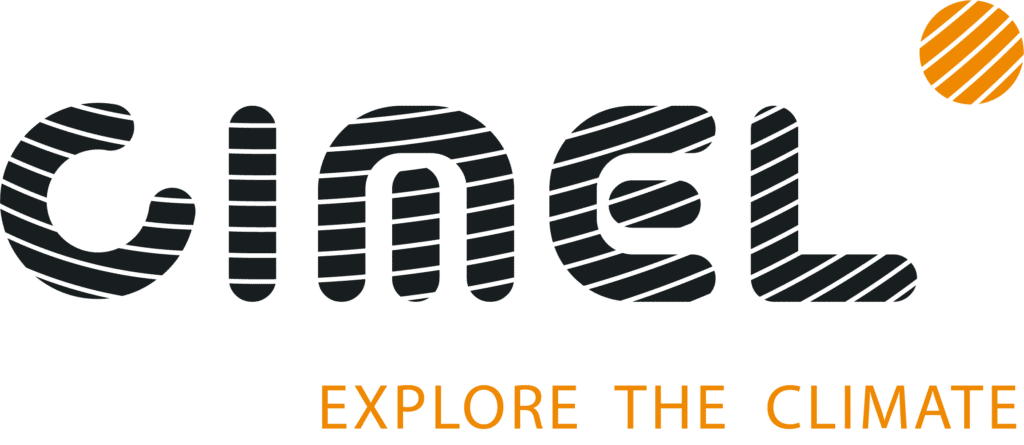





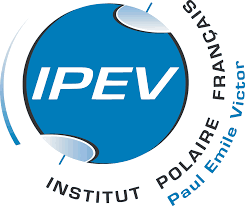


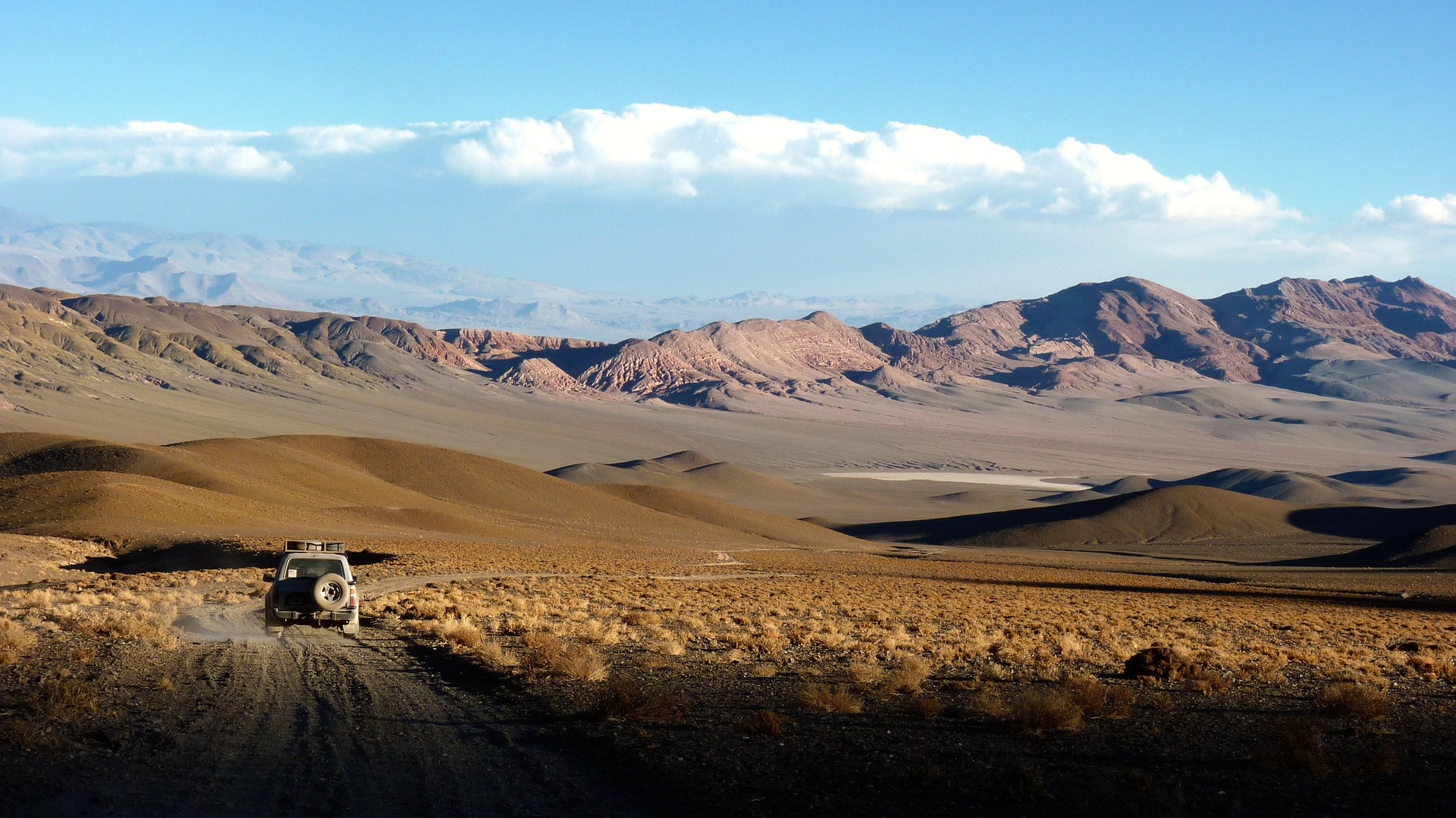
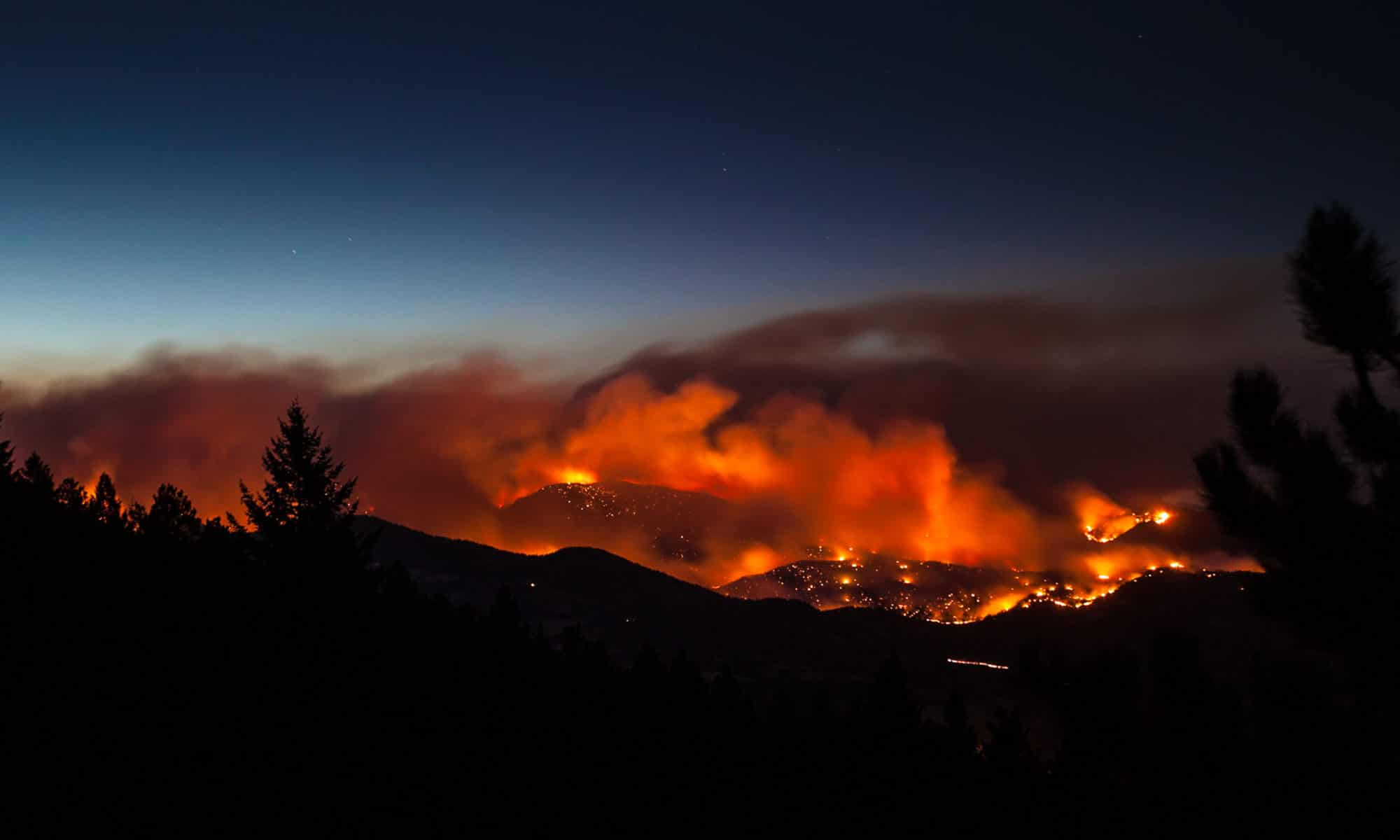
.jpg)
